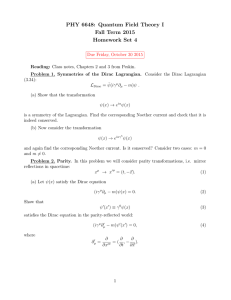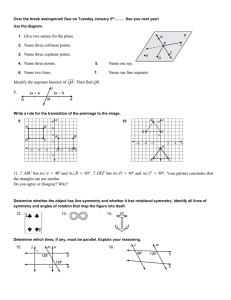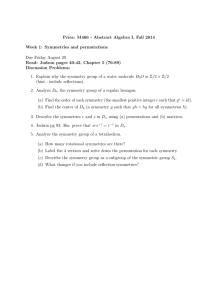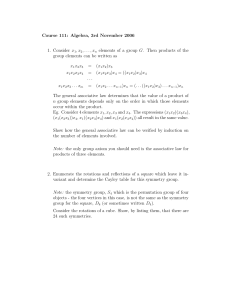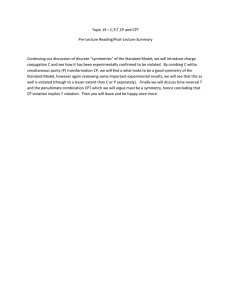PHY 6648: Quantum Field Theory I Fall Term 2005 Homework Set 8
advertisement
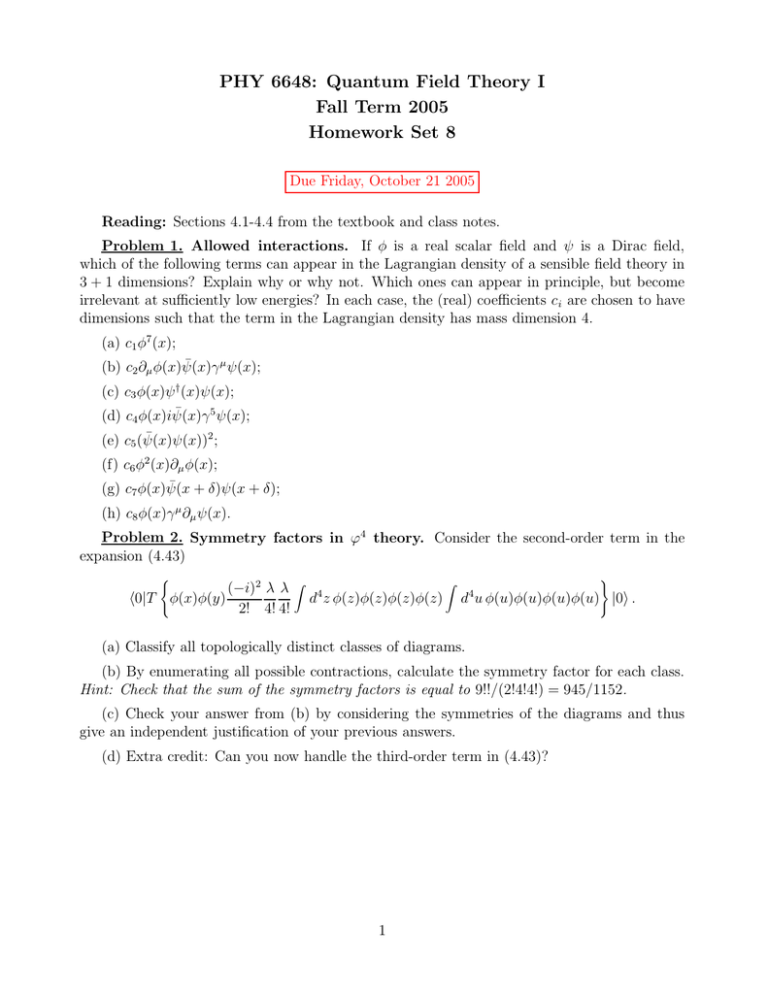
PHY 6648: Quantum Field Theory I Fall Term 2005 Homework Set 8 Due Friday, October 21 2005 Reading: Sections 4.1-4.4 from the textbook and class notes. Problem 1. Allowed interactions. If φ is a real scalar field and ψ is a Dirac field, which of the following terms can appear in the Lagrangian density of a sensible field theory in 3 + 1 dimensions? Explain why or why not. Which ones can appear in principle, but become irrelevant at sufficiently low energies? In each case, the (real) coefficients ci are chosen to have dimensions such that the term in the Lagrangian density has mass dimension 4. (a) c1 φ7 (x); (b) c2 ∂µ φ(x)ψ̄(x)γ µ ψ(x); (c) c3 φ(x)ψ † (x)ψ(x); (d) c4 φ(x)iψ̄(x)γ 5 ψ(x); (e) c5 (ψ̄(x)ψ(x))2 ; (f) c6 φ2 (x)∂µ φ(x); (g) c7 φ(x)ψ̄(x + δ)ψ(x + δ); (h) c8 φ(x)γ µ ∂µ ψ(x). Problem 2. Symmetry factors in ϕ4 theory. Consider the second-order term in the expansion (4.43) ( ) Z (−i)2 λ λ Z 4 d z φ(z)φ(z)φ(z)φ(z) d4 u φ(u)φ(u)φ(u)φ(u) |0i . h0|T φ(x)φ(y) 2! 4! 4! (a) Classify all topologically distinct classes of diagrams. (b) By enumerating all possible contractions, calculate the symmetry factor for each class. Hint: Check that the sum of the symmetry factors is equal to 9!!/(2!4!4!) = 945/1152. (c) Check your answer from (b) by considering the symmetries of the diagrams and thus give an independent justification of your previous answers. (d) Extra credit: Can you now handle the third-order term in (4.43)? 1
